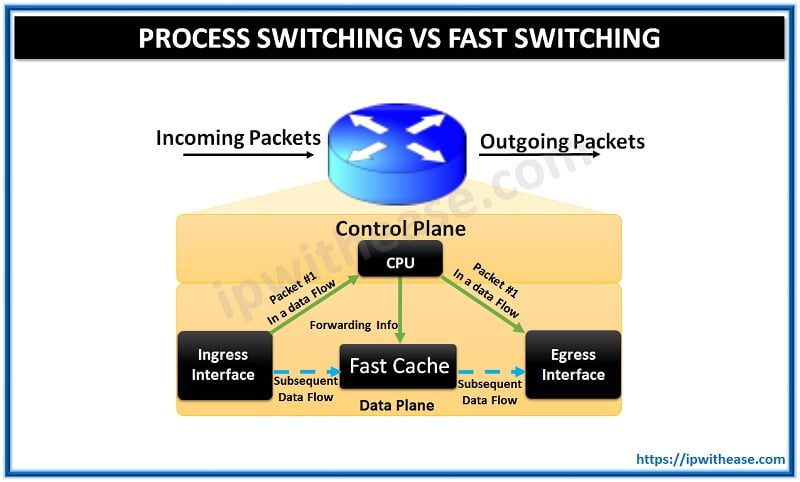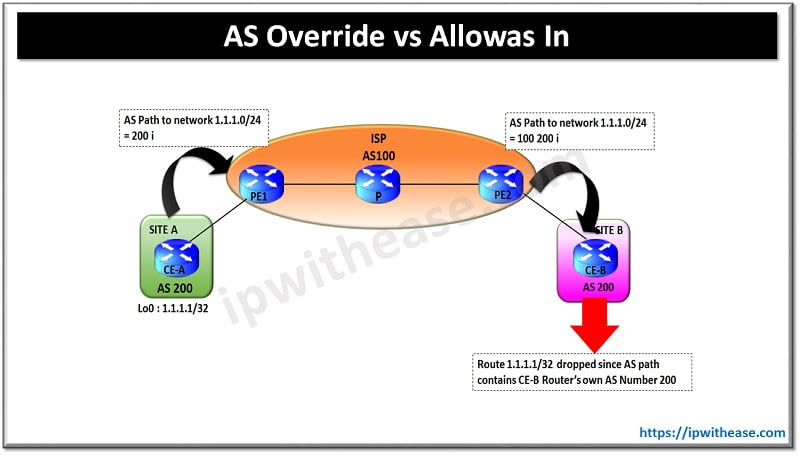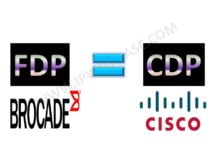Table of Contents:
Virtualization hides the physical characteristics of cloud computing resources. This makes a physical resource to function as several logical resources or make several physical resources into a single logical resource. Virtual networks provide a means to deployment and look alike operating several networks however the underlying hardware and physical connectivity as a single resource. Network virtualization in the cloud allows a single physical router having multiple route tables.
Today we look more in detail about Virtual route forwarding (VRF) and Bridge domain (BD), understanding their purpose, functioning, use cases.
Virtual Routing and Forwarding (VRF)
Virtual route forwarding (VRF) is used in an IP based network technology to enable co-existence of several virtual routers (VRs) as instances or virtual router instances (VRIs) within the same physical router. VRF works on OSI model layer 3. The independent instances of routing allow users to have IP addresses deployed which overlap without conflict. Users can segment network paths without having multiple physical routers.
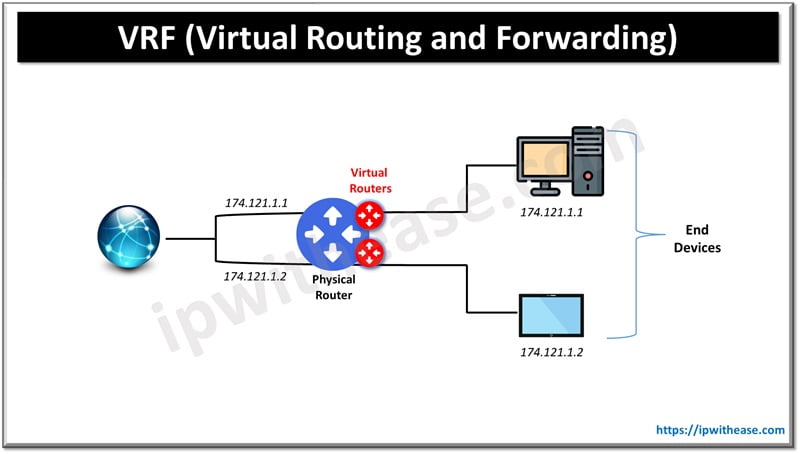
Advantages of Virtual Routing Forwarding
- On a single physical device enabling virtual creation of multiple routes
- Simultaneous management of multiple routing tables
- Used in MP BGP and MPLS deployment
- Use of overlapping IP addresses for multiple VPNs for customers
- Segment network paths to improve network functionality without multiple routers
Bridge domain (BD)
Bridge domain (BD) is OSI layer 2 broadcast domain. Bridge domain interface is a logical interface which permits bidirectional flow of traffic between bridged network (layer 2) and routed network (layer 3). Bridge domain interfaces are identified by the same index as used by bridge domain for identification. Each bridge domain has only one bridge domain interface associated with it. Bridge domain interfaces support:
- Termination of IP
- VPN termination
- Assignment of MAC address
- G-ARP, P-ARP, and address resolution protocol (ARP) handling
Related: Difference between ARP and RARP
A bridge domain is like a single VLAN and all VLAN ports are single domain (broadcast). All bridge domain operations such as learn, forward, flooding, filter and aging are performed to have an Ethernet switching table – MAC table for bridge domain / VLAN.
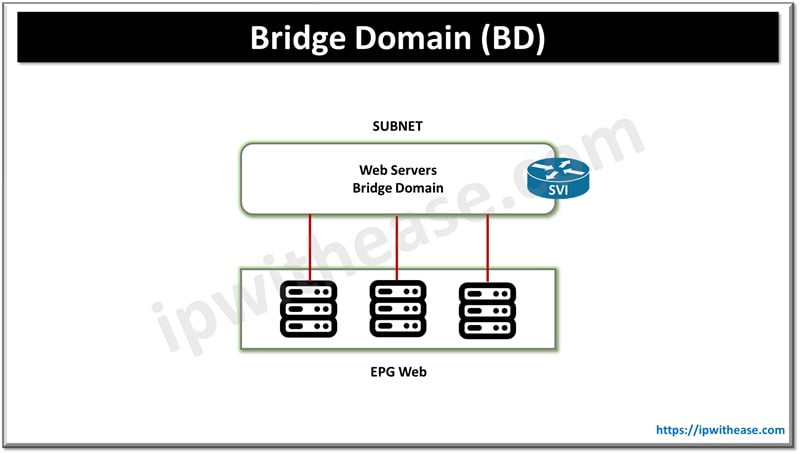
Comparison: VRF vs Bridge Domain (BD)
| Function | Virtual Router Forwarding (VRF) | Bridge Domain (BD) |
| Purpose | A Virtual Route Forwarding enables to use IP address space multiple times without using multiple physical devices. It let network paths to be segmented on a single router | A bridge domain is like a VLAN under a single broadcast domain and it is a member of VRF. It is an infrastructure which supports different switching technologies implementation |
| Operates at | Virtual route forwarding (VRF) operates at layer 3 of OSI model | Bridge domain operates at layer 2 of OSI model |
| Requirement | VRF is required for all bridge domains and subnets | Bridge domain is required to define a flood domain |
| Security | Virtual route forwarding improves security of networks and eliminates need of encryption and authentication | Endpoint Groups or EPG is used to define security zones within a bridge domain |
| Protocols supported | VRF supports routing protocols such as BGP, OSPF and RIP | Bridge domain supports ARP, DHCP, HTTP, ICMP, NTP, RARP, SNMP, TCP, Telnet, TFTP and UDP protocols |
| Use cases | Large enterprises can use VRF to create separate routing domains, services providers use to provide Virtual private network (VPNs) to their customers, implemented by data centers for traffic isolation between tenants, IoT deployments | Generic broadcast domain which could be used to switch packets between a range of different types of endpoints such as attachment circuit (AC), Virtual private LAN service (VPLS), Virtual leased line (VLL), tunnel endpoints. |
Continue Reading:
VRF vs ACL : Know the difference
VXLAN vs VRF Lite: Detailed Comparison
ABOUT THE AUTHOR

You can learn more about her on her linkedin profile – Rashmi Bhardwaj

